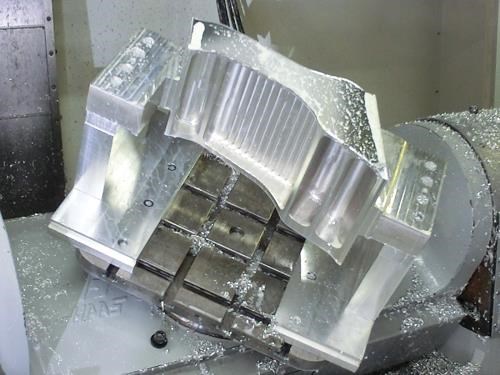Clamping Options for Five-Axis Machining
In five-axis machining, the workholding has to get out of the way. The wrong choice of clamping risks collision and can obscure one of the principal benefits of a five-axis machine.
Share






In five-axis machining, the workholding has to get out of the way. This is one of the challenges. Particularly on trunnion-style machines that pivot the part instead of the tool, the wrong choice of clamping or fixturing risks collisions as the part rotates through compound angles. Meanwhile, one of the promises of five-axis machining is the ability to cut various faces of the part in a single setup. That benefit is compromised if the workholding device—say, a standard vise—covers up the surfaces of the part.
For shops rethinking their workholding for five-axis machining, Haas Automation posted this useful article detailing various fixturing options engineered specifically for five-axis machining.
One other approach, seen in the accompanying photo, is to make the workpiece itself the fixture by clamping the billet and machining the part out of it. This photo was taken at Padgett Machine. Read about Padgett’s experience with five-axis machining here.
Related Content
-
The Future of High Feed Milling in Modern Manufacturing
Achieve higher metal removal rates and enhanced predictability with ISCAR’s advanced high-feed milling tools — optimized for today’s competitive global market.
-
How to Troubleshoot Issues With Tool Life
Diagnosing when a tool is failing is important because it sets an expectation and a benchmark for improvements. Finding out why gives us a clue for how to fix it.
-
Briquetting Manufacturer Tools Up for Faster Turnaround Times
To cut out laborious manual processes like hand-grinding, this briquette manufacturer revamped its machining and cutting tool arsenal for faster production.













